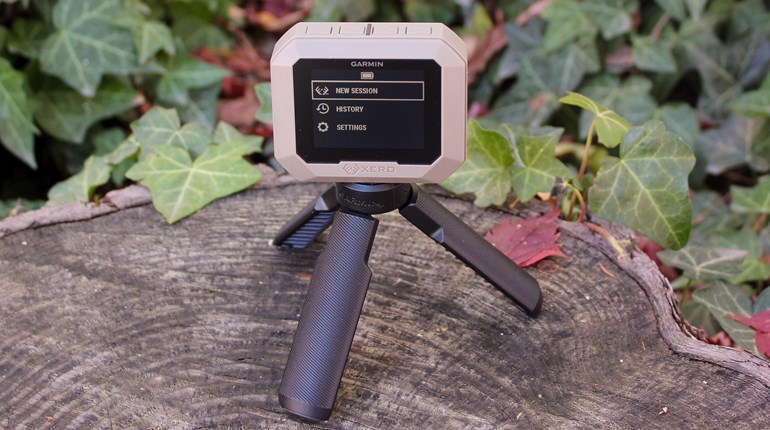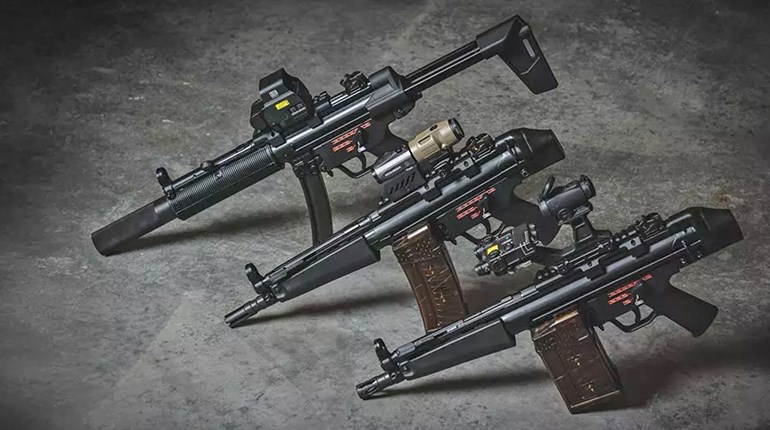
This comparison has been requested by several readers, and while I would generally pit two cartridges of closer performance levels, these two are extremely popular choices as all-around hunting cartridges. They also happen to be the two .30-caliber cartridges that I've spent the most time with, so I have a special place in my heart for each of them. Both have their own sets of devotees, and both are forced to compete with the .30-06 Springfield’s benchmark performance.

The .308 Winchester was developed by the U.S. Army as a replacement for the .30-06 Springfield, as powder technology had proven that the same velocities could be achieved in a smaller combustion chamber. Beginning with the .300 Savage case, the military experiments gave us the T65 cartridge, which would be adopted under the name 7.62x51mm NATO in 1954, yet released to the civilian world as the .308 Winchester two years earlier. A rimless case with a 20-degree shoulder produced muzzle velocities very close to those generated by the ought-six, though a 1:12” twist rate limited bullet choice to 200 grains; no matter, the case capacity was best served by bullets weighing between 125 and 180 grains, and that range can handle almost anything you’d pursue with a .30-caliber cartridge.

Comparisons to the .30-06 Springfield were immediate, and while the older cartridge does have a slight velocity advantage, the .308 Winchester is no slouch at all, and makes a viable all-around hunting cartridge, in addition to being a favorite of the target community, especially prior to the release of that Creedmoor thing. I like the 165-grain bullets in the .308 Winchester, as they will leave the muzzle around 2650 fps, give or take, depending on the brand, yet have a sectional density value high enough to ensure deep penetration. The .308 Winchester is easy on the shoulder, and I still feel it makes one of the best whitetail cartridges ever, especially when in a multiple species area like we have in New York, where black bears become more prevalent each season. Considering the fact that the .308 Winchester has defined the short-action rifle receiver, it makes a great hunting rifle 70 years after its introduction.
The .300 Winchester Magnum lies on the other side of the velocity spectrum, being a bit faster than the .30-06 Springfield. It was released in 1963, as the fourth in a series of belted magnum cartridges based on the Holland & Holland case, shortened to fit in a long-action receiver. While the .458 Winchester Magnum handled thick-skinned game, the .338 Winchester Magnum had become the darling of those going to Alaska and those who chased bugling bulls each fall, and the .264 Winchester Magnum shined on those longer shots out West for mule deer and pronghorn, it was inevitable that the market would demand a .30-caliber version. The .300 H&H Magnum had been a popular choice—being chambered in Winchester’s own Model 70—it did require a magnum-length receiver. Norma produced what everyone expected the new .300 Magnum to be, with their 1960 release of the Nils Kvale-designed .308 Norma Magnum; this cartridge—while nowhere near as popular as the .300 Winnie—remains a fantastic design.

Winchester’s own .300 would be a bit different from the previous three releases, in that the case length would change from 2.500 inches to 2.620 inches, and the shoulder moved forward to reduce the neck length to 0.264 inches. This left additional room for powder, and though the cartridge is criticized for its shorter-than-normal neck length, I've never had a problem with neck tension. The cartridge shares the 3.340-inch cartridge overall length as its siblings, and while it’s designed to headspace off the belt, reloaders have long allowed the 25-degree shoulder to handle that duty for better concentricity.
The .300 Winchester Magnum will push a 180-grain bullet to a muzzle velocity of 2960 fps—which I feel is just about perfect—and the 165-grain bullet to 3050 fps, offering a significant increase over both the .308 Winchester and .30-06 Springfield. That velocity increase does come at the cost of increased recoil, though I feel the .300 Winchester Magnum is among the more palatable of the .300 Magnums, being easier to shoot than the .300 Weatherby Magnum or .300 Remington Ultra Magnum. It is a wonderfully accurate cartridge, delivering the hair-splitting accuracy required for longer shots at game animals, and is at home on the target range as well. It has been the choice of military snipers and sheep hunters alike.

Both cartridges have a huge variety of factory-loaded ammunition choices, to the point that it becomes a non-issue. In fact, I think that any company that makes ammunition will have some sort of offering in both cartridges. Reloading components—when they are available—are plentiful for both cartridges. The better cartridge for you will depend on what you plan to hunt, and where you want to hunt it. The additional horsepower and striking energy of the .300 Winchester Magnum may appeal to you if you want to pursue elk, moose and bear across the west, or the largest of the African plains game. That said, if you learn the trajectory of the .308 Winchester (only slightly less flat than that of the .300 Magnums) and plan to stay within reasonable hunting ranges, there is no reason not to rely on a .308 Winchester.
For the better part of a decade, the .308 Winchester was the only cartridge I used for all my big-game hunting, though that only included whitetail deer, black bear and the rare opportunity for a coyote. Though the ranges were inside of 200 yards, I knew that rifle well, and it never let me down. The .300 Winchester Magnum has been all over the world with me, from local hunts here in New York, to caribou hunts in Quebec, pronghorn hunts in Wyoming, aoudad hunts in West Texas, to being my light rifle on a trio of safaris across southern Africa. It is equally flexible, and can be handloaded down, nearly to .308 Winchester specs, but the full-house loads will roar like a lion.

If we look at this competition from the point of view of the deer hunter who may take his or her rifle for a few different species, the mild recoil and economic benefits of the .308 Winchester will shine, and that cartridge will make the most sense. But for a hunter who wants to travel the world and wants one rifle for the vast majority of his or her hunting excursions, be it Coues deer in Arizona, elk in Colorado, moose in the Yukon or the eland of a lifetime across the red sands of Namibia, it is really hard to beat the wide range of applications that the .300 Winchester Magnum is suited for.
Maybe I can best put it this way: I love to travel the globe and experience as many different hunting situations as possible while I fill the pages of my passport; it seems that my .300 Winchester Magnums get to go on vacation, while my .308 Winchesters tend to stay home. The world needs both, and I don’t see either of them going anywhere, anytime soon.
Looking for previous installments of our "Head to Head" series? We've got you covered.
• 6.5 Creedmoor vs. 6.5 PRC
• .22 LR vs. .22 WMR
• .30-06 Springfield vs. .300 Winchester Magnum
• .300 Wby. Mag. vs. 8mm Rem. Mag.
• 7mm Remington Magnum vs. 27 Nosler
• .257 Roberts vs. .25-06 Remington
• .300 H&H Magnum vs. .300 Winchester Magnum
• .308 Winchester vs. .338 Federal
• .222 Remington vs. .223 Remington
• .270 WSM vs. 7mm Rem. Mag.
• .22-250 Remington vs. .204 Ruger
• .25-06 Remington vs. 6.5 Creedmoor
• .444 Marlin vs. .45-70 Government
• 7x57mm Mauser vs. .280 Remington
• .300 Win. Mag. vs. .300 Wby. Mag.
• .375 Ruger vs. .375 H&H Magnum
• 7mm-08 Remington vs. .280 Remington
• .280 Remington vs. .280 Ackley Improved
• 7mm vs. .30 Caliber
• 6.5 Weatherby RPM vs. 6.5 PRC
• .338 Win. Mag. vs. .340 Wby. Mag.
• .300 RSAUM vs. .300 WSM
• .500 Jeffrey vs. .505 Gibbs
• 7mm RUM vs. .300 RUM
• .308 Winchester vs. 7mm-08 Remington
• 6.5 Creedmoor vs. .260 Remington
• .303 British vs. 8x57 Mauser
• .30-06 Springfield vs. All Other .30s
• .17 HMR vs. .17 WSM
• .450 Nitro Express vs. .470 Nitro Express
• 350 Legend vs. .35 Remington
• .280 Ackley Improved vs. 7mm Rem. Mag.
• .404 Jeffery vs. .416 Rigby
• .243 Winchester vs. 6mm Creedmoor
• .300 PRC vs. .300 Win. Mag.
• .30-06 Springfield vs. .270 Winchester
• 6.5 Creedmoor vs. 7mm-08 Remington
• 8x57 Mauser vs. .318 Westley Richards
• .358 Winchester vs. .350 Remington Magnum
• .22-250 Remington vs. .220 Swift
• .270 Winchester vs. .270 WSM
• .26 Nosler vs. 6.5-300 Weatherby Magnum
• .458 Win. Mag. vs. .458 Lott
• 7mm Rem. Mag. vs. .300 Win. Mag.
• .243 Winchester vs. 6mm Remington
• 7x57mm Mauser vs. 7mm-08 Remington
• .25-06 Remington vs. .257 Weatherby Magnum
• .338 Winchester vs. .375 H&H Magnum
• .30-30 Winchester vs. .35 Remington
• .257 Roberts vs. .250-3000 Savage
• .270 Winchester vs. .280 Remington
• .35 Whelen vs. 9.3x62mm Mauser
• .416 Rigby vs. .416 Remington Magnum
• .308 Winchester vs. .30-06 Springfield
• .22 Nosler vs. .224 Valkyrie
• .300 Win. Mag. vs. .300 WSM
• .223 Remington vs. .22-250 Remington




































